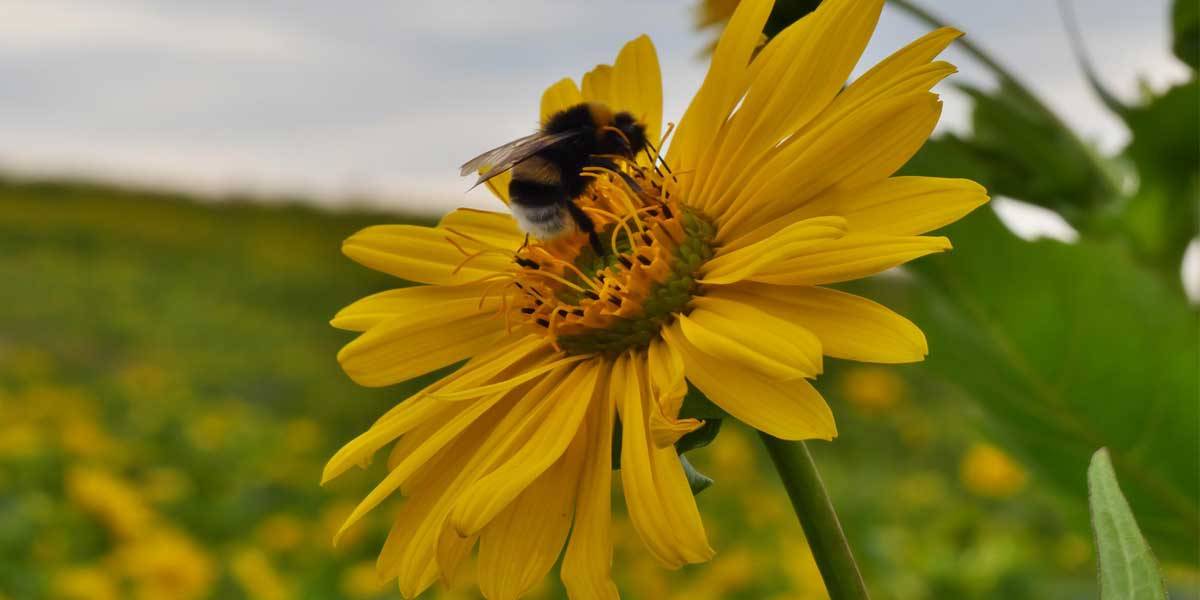The Nature Park and UNESCO Global Geopark Vulkaneifel has been part of a project since the end of 2016 that combines the themes of climate protection and biodiversity. The goal is to reduce CO2 emissions through climate protection measures and contribute to biodiversity conservation.
The LIFE-IP ZENAPA project aims for the CO2e neutrality of Large Protected Areas (GSG), which includes national parks, biosphere reserves, and nature parks. Over the eight-year project period, IfaS will pursue this goal in collaboration with 15 partners from Germany and Luxembourg.
Integration of Climate, Nature, and Species Conservation
LIFE-IP ZENAPA will, on one hand, contribute to climate, nature, and species conservation by implementing specific climate-friendly measures. On the other hand, it will demonstrate that conservation goals do not conflict but complement each other and can be achieved cooperatively. The main objective is to implement national and European climate protection goals (CAP 2020 and CPP 2050), taking into account national and European biodiversity and bioeconomy strategies.
The project aims to create an information and competence network for sharing experiences and mutual learning. Additionally, it seeks to establish partnerships among the partners to develop and implement project ideas collaboratively. Furthermore, through public reporting and information provision, the project aims to trigger emulation effects in project-related regions even after the project's completion, thus continuing to contribute to the EU and federal climate protection goals.
The project has a total budget of approximately €17 million over an 8-year project duration, with around €8 million funded by the European Union's LIFE program. The remaining amount is contributed by the project management, participating partners, and co-financiers (Berlin Senate, KSB AG, OIE AG, and the Nature and Environment Foundation of Rhineland-Palatinate).
In addition to the fundamental measures implemented within the project, LIFE-IP ZENAPA also envisions initiating further projects aligned with the project's goals. Funding opportunities for these "complementary projects" have already been identified in the triple-digit million range.
Goals for the Vulkaneifel Region
The topics considered in the context of ZENAPA within the Nature and Geopark are diverse. They include sustainable procurement, renewable heat and power generation, the establishment of alternative energy crops, children's climate protection conferences, the creation of a mobility center, and the development of district concepts.
Climate Protection Concept for the Nature and Geopark and District Concepts for 10 Local Communities
For the Nature Park and UNESCO Global Geopark, a climate protection concept has been developed, aiming to make local resources usable through innovative management and create regional added value. Another central element of the project is the creation of district concepts for selected local communities. The integrated district concept identifies the potential for CO2 savings, increased energy efficiency, and reduced primary and final energy demand. To realize these potentials, specific and feasible measures are presented (e.g., street lighting (LED), sustainable mobility (electric community car, E-car sharing pool), district heating and object heating networks (biogas/wood chips/solar thermal), biomass yards, photovoltaics for public buildings, private households, as well as commerce/trade/services, possibly in combination with storage technologies).
In a total of 10 municipalities, the district concepts will promote measures to increase energy efficiency in the district. This involves analyzing who the largest energy consumers in the district are, where the potential for energy savings and efficiency lies, and what the overall energy balance of the district should look like after renovation. Workshops will then be conducted with local residents to create a concept that optimizes the conditions in the municipality.
Other examples of measures envisioned within the project include:
-
Conversion to LED Lighting
Replacing conventional lighting with LED lighting has economic and environmental benefits. It reduces energy consumption and maintenance costs, while also protecting fauna and flora by reducing light pollution. This has been implemented in many places through street lighting renewal or the conversion of floodlight systems. -
Efficiency Improvement of Biogas Plants
A regional farmer achieved significant efficiency improvement in his biogas plant through the use of a cavitation system. The system promotes the formation, growth, and decay of gas bubbles in the biogas substrate, providing microorganisms with a larger surface area to work on. This allows for significantly more and faster biogas production from the same amount of substrate. Additionally, the use of alternative energy crops can achieve better crop diversity and positive effects such as erosion protection. -
Corporate Mobility Management
In rural regions, motorized individual transport accounts for a large part of the modal split. To enable the use of sustainable forms of mobility, a pilot and exemplary mobility management system was supported in the district administration. The creation of infrastructure for e-bikes and the installation of two charging points for electric cars simplify mobility transitions for employees. The public can also benefit from a public charging station through e-car sharing.
To analyze the issue of mobility in rural areas, a mobility center is also planned. The central goal is to transform transportation in the Vulkaneifel region into a holistic, sustainable, and environmentally friendly mobility approach and establish the Vulkaneifel district as a model and innovation region for innovative propulsion and energy systems. The center is planned to be located at the Berufsbildende Schule (BBS) Vulkaneifel in Gerolstein. This allows students to engage practically with these future topics and helps anchor acceptance for sustainable mobility in the population in the long term.

Contact:
Vulkaneifel District Administration
Structural and Regional Development
Mainzer Strasse 25
54550 Daun
Branch Office: Freiherr-vom-Stein-Str. 15a
Miranda Deviscour
Phone: (+49) 6592/ 933 - 586
Email:
Further Information:
https://www.zenapa.de
https://www.facebook.com/ZENAPAlife
https://twitter.com/ZENAPAlife
https://youtu.be/F1h6U9QL4Tk

